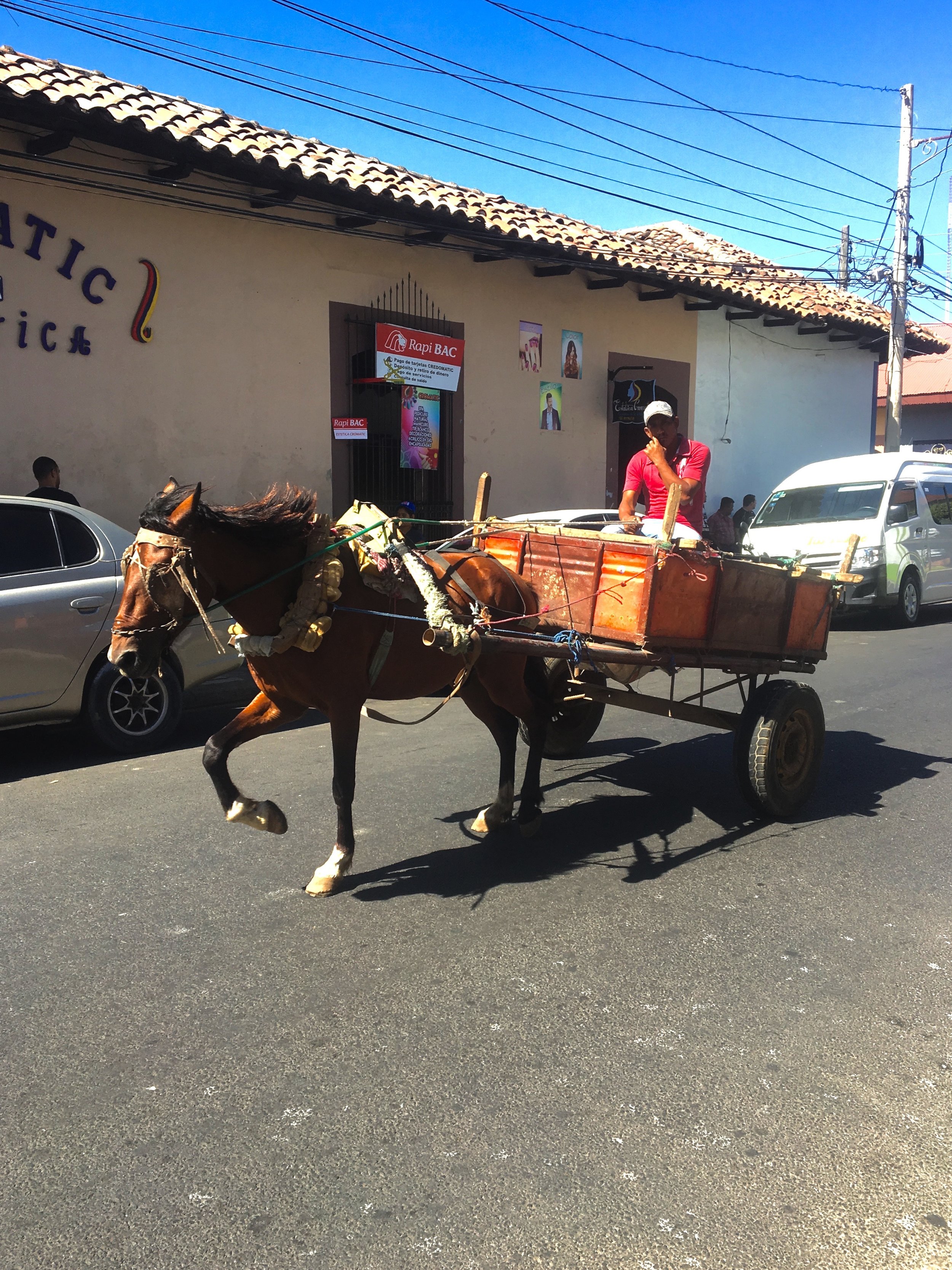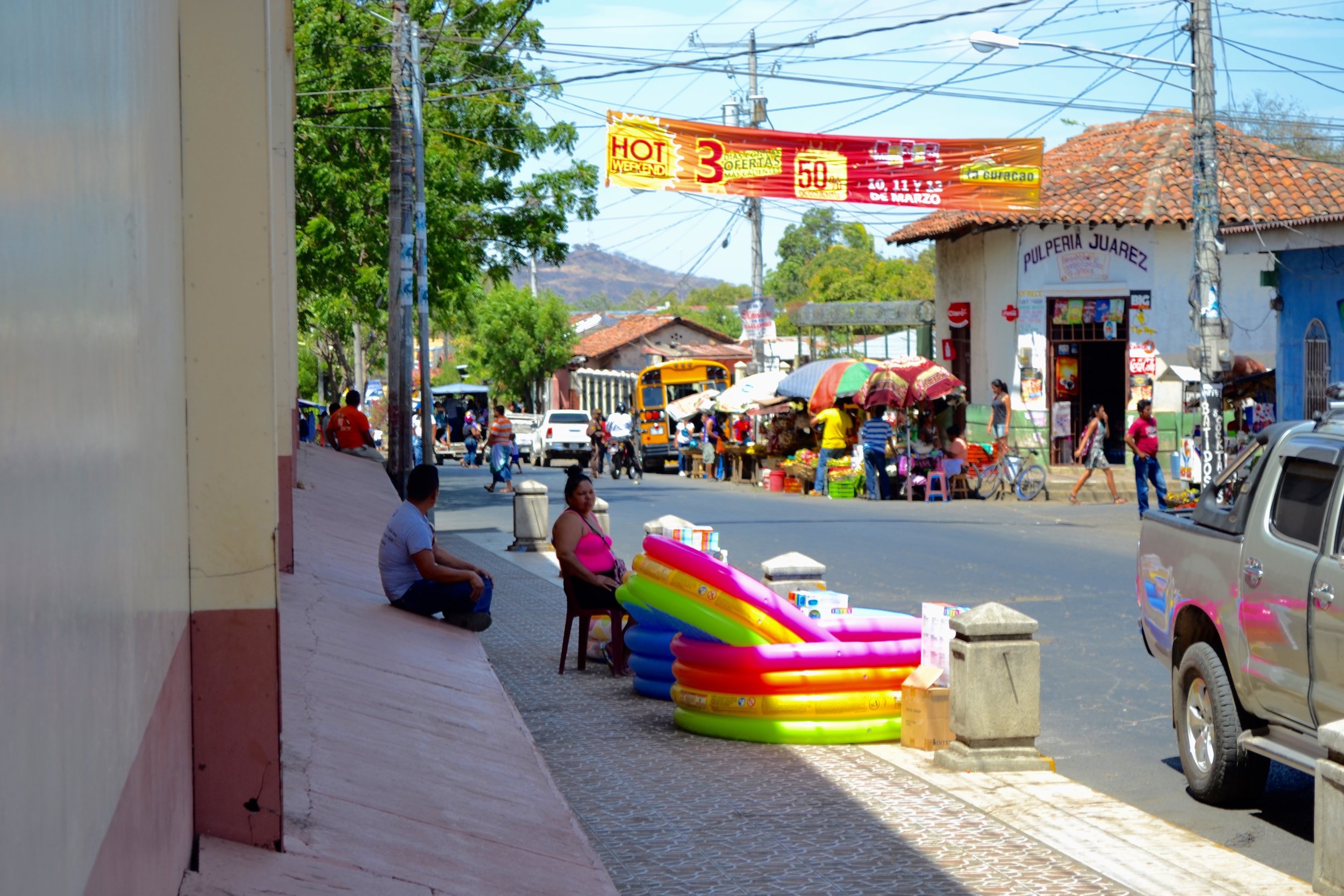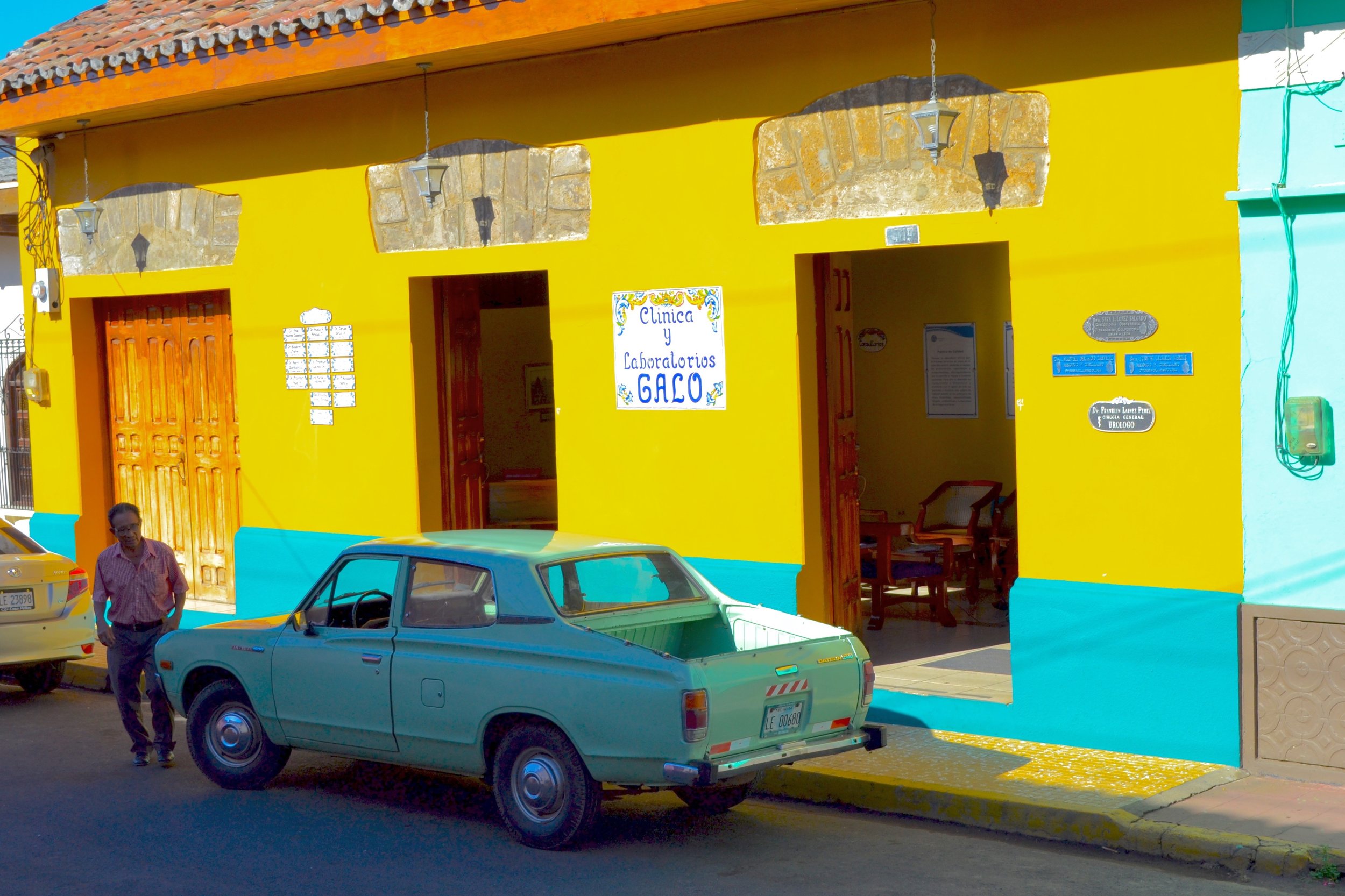Talking About a Revolution
photos and text by beverly wakiaga
When you’re flying into Managua the first thing you will notice is the color. The brightly colored tin roofs, followed by the colorful decorative faux trees that line the main street in Managua. In Leon, the city where the revolution began, you will notice the cobbled streets and the vibrant colors of the colonial buildings around town, almost reminiscent of Cuba. In Nicaragua you’ll also notice the dust. Third-world dust. Dust that seems to only inhabit countries that are seen as developing or are part of the global south.
Nicaragua is the second poorest country in the Western Hemisphere, after Haiti. Their development has been curtailed by insurrections, revolutions and natural disasters. But those events have not changed the will and determination of the Nicaraguan people to improve their country.




The love that Nicaraguans have for their country is unique because it comes after decades of turmoil and regional instability. While for Americans their love of country is tied to the notion that the United States is the greatest country in the world, for Nicaraguans their love is meant to protect their land and help it thrive. They have an understanding that their fate is tied to whether or not their country is prosperous.
To understand Nicaragua in the present day, we must go back to the beginning of the revolution in 1978. The revolution was led by the Sandinistas (FSLN), a guerilla group that was led by young people and named after Nicaraguan freedom fighter, Augusto Sandino, who was assassinated by troops loyal to Anastasio Somoza García in 1934.
Javier Hernandez, a former Sandinista fighter, emphasized the importance of young people and their concerns for the future.
“What we did in that moment, was so that in Nicaragua there would never be another war,” he said.
Javier Hernández (above) recalls his time as an FSLN operative during the Nicaraguan Revolution (below).
Photo: Margarita Díaz
Still from "Valor From Darkness," courtesy Erin Sabato.
At the time of the revolution, Nicaragua was just like several other Latin American countries whose population endured under a U.S.-backed dictator. The Somoza family came into power in 1936 and while they didn’t stay in power all throughout they managed to rule Nicaragua with an iron fist, regardless of whether they were in office or not.
For many Nicaraguans, the revolution is not something they can forget. However, If you ask some of the older generation about their memories before the revolution they will tell you their life was normal. Most of them were kids during the revolution. The revolution was their life. Jose Acevedo, a 63-year-old from León, recalls his life under the Somoza dynasty as not too bad. The country was relatively stable and even saw improvements in their economy.
Acevedo lived with his father, mother and siblings and remembers them working together. Most importantly, he remembers that he was able to afford to live a simple life. Something, he says, you can barely do today.
José Acevedo says the times before the Revolution were simpler: "With a week of work, I could buy my shoes, my clothes, but now it's impossible," he says.
“Before, even if you worked a little, and earned little, there was food to eat,” he said. “Now, you can earn more money, but it’s not enough. Everything is more expensive. So in the old days, with a week of work, I could buy my shoes, my clothes, but now it’s impossible.”
All this came at a price. While the country was somewhat prosperous under Anastasio Somoza Debayle, it was even more prosperous for Somoza and his cronies. The family is believed to have been worth $1 billion during the mid-1970s. They owned farms and grazing land in Nicaragua, properties in Guatemala, Honduras and Costa Rica, as well as real estate in the United States. In fact the Somoza ties to the United States were so strong that the family would send the children to schools in America. Stephen Kinzer, who covered the revolution for the Boston Globe, detailed the list of crimes the Somoza dictatorship is guilty of in his book “Blood of Brothers,” among them imprisoning men in a “specially constructed zoo within the private Somoza compound. Cages there were built with two compartments, one for a big cat and the other for a political prisoner.”
Throughout the reign of the Somozas, especially Somoza Debayle, there were protests and opposition to the dictatorship, but these complaints were swept under the rug, sidestepped and ruthlessly dealt with. Support from the U.S. government helped thwart many of the Nicaraguans’ efforts to remove the Somoza family from power, especially after the assassination of Somoza I in 1956. This all changed after the Managua earthquake in 1972, when relief food and supplies sent by the rest of the world were mishandled by the Somoza family and it became apparent to what extent they were using public coffers for private gain.
Anastasio Somoza Debayle in 1967.
Photo courtesy Erin Sabato
“They were the owners of all lands in Nicaragua in that time,” Hernandez said. “They were the owners of the army. They were the owners of the National Guard--an army group created by the Marines.”
Young people bore the brunt of the struggle: From the founding of the FSLN to enduring the abuses of the National Guard to leading of the insurrection against Somoza. They had to come up with tactics such as using patients in hospitals as a blockade against Somoza’s military. They were beaten, tortured, kidnapped, detained and killed to liberate their country from a dictator. Hernández was 18 years old when the revolution began, while Jose Acevedo was 25. Both were involved for different reasons.
“We were young people. We made the ultimate sacrifice, which was to give up our youth,” Hernandez said. “Most of the compañeros at that time, we were just in high school. We never thought we would get involved in that tragedy, but it was necessary. Even though it led to the death of many and we had a lot of orphans and families that were destroyed, that sacrifice was necessary.”
Before the revolution, Hernandez wanted to be an agricultural engineer. However, during the revolution he became a member of the tactical combat squads. His entire family was part of the revolution: two of his brothers moved to the highlands in order to fight against the national guard.
Acevedo, on the other hand, was a reluctant participant of the revolution. He worked for a fireworks company prior to the revolution and was recruited to make bombs for the guards. His family never knew he was involved in the revolution.
“Sometimes I would run away, but people would tell the guards where I was,” he said. “I was concerned because of the chemicals and I was afraid that when you mix them, when you do the chemistry, I was afraid that I would get hurt, that it would explode.”
After Somoza was removed from power in 1979, the country was plunged into a Civil War between the Contras--a US-backed anti-Sandinista guerilla group--and the Sandinistas. For most of the ‘80s the country was plagued by a war that some say was a proxy war between the U.S. and the USSR.
“Those of us doing the fighting didn’t even know what communism was.” Hernandez said. “What we wanted was an end to repression and injustice. And in that war we had even more victims.”
It has been 38 years since the end of the revolution. Since then the country has experienced democratic elections, their first female president, as well as the return of the first democratically elected president, Daniel Ortega. Ortega is sort of an enigma in Nicaraguan politics. He was not expected to become the first president of Nicaragua. With his Coke bottle thick glasses, squat demeanor and droning voice, Ortega did not come across like his fellow revolutionaries, such as the fiery and charismatic Fidel Castro. Yet he has managed to clinch the title of president thrice.
Daniel Ortega in Managua in 2013.
Photo by Fernanda LeMarie, Cancillería de Ecuador, via Wikimedia Commons
However, some see his tactics to stay in power as authoritarian since he is believed to be grooming his wife, the current vice president of Nicaragua, to be his successor. Although he is considered a Sandinista, some have gone as far as to say he is only Sandinista in name, no longer Sandinista in action.
The government has attempted to implement different policies such as literacy, education programs and health campaigns that elevate the experiences and livelihoods of the everyday Nicaraguan. However, this has been marred by the political and constitutional changes that Ortega has forced through to stay in power.
Hernández said the government hasn’t given him or other former revolutionary fighters any help or benefits, something he makes clear they never promised to do. He can still see the good that the government has done for the country. Overall he would give the current government a B grade, he said.
Acevedo has a different perspective on the Sandinistas and the government. He said that the majority of the problems that Nicaragua faces are because of the Sandinistas. He is disappointed, and does not agree with Daniel Ortega and all the things he’s doing in Nicaragua.
“I’m not a Sandinista,” he clarifies, before adding, “I can be a Sandinista but not a Danielista.”






